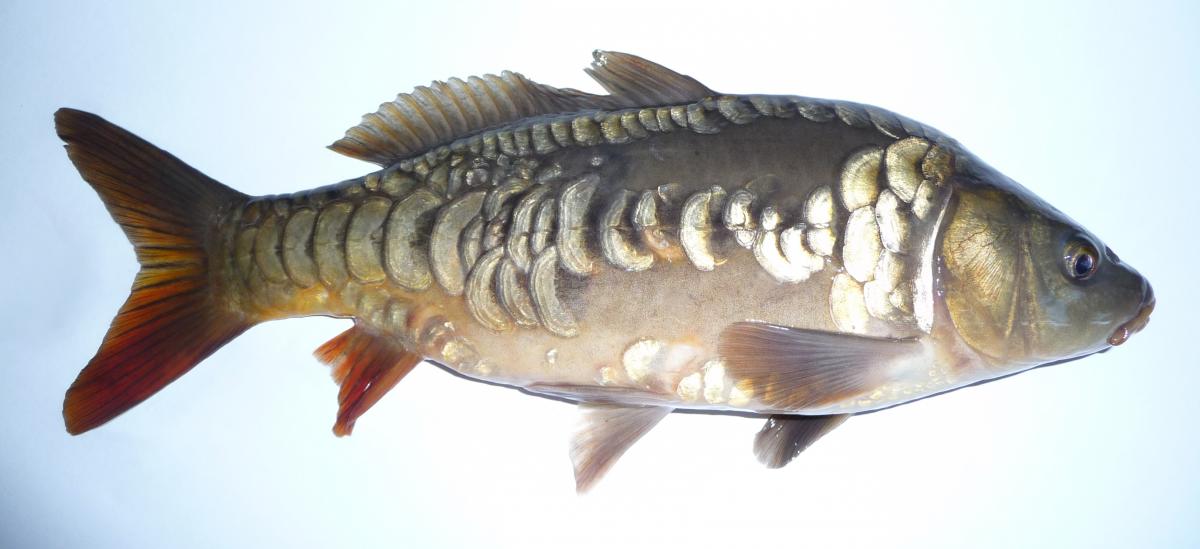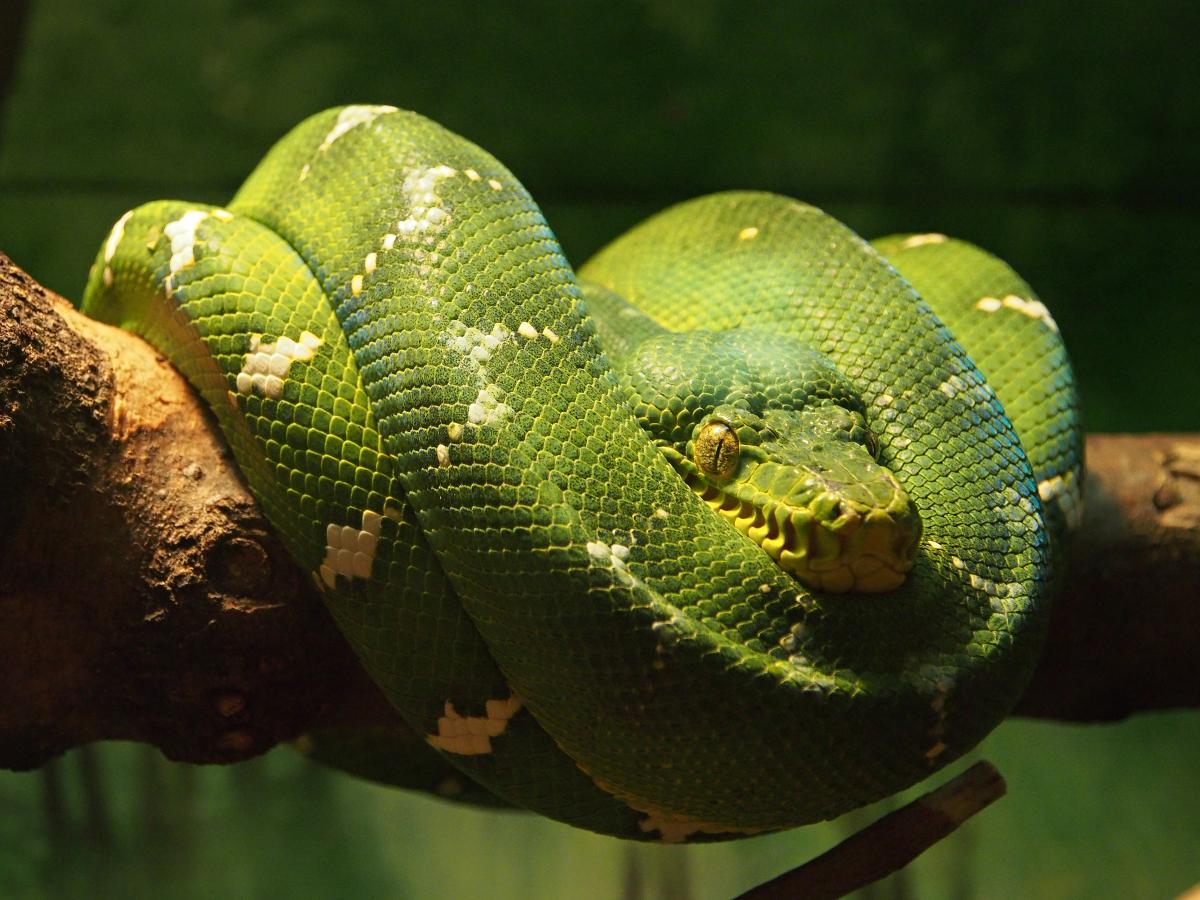 In part 1, I relayed a story of the common carp. Long ago, the carp was domesticated by monks to have fewer, patchy scales, making the fish easier to prepare and eat. Some of these monk-bred “mirror carp” were released in Madagascar in 1912 to provide a ready source of fishy deliciousness. Just forty years later, a majority of wild-caught carp in Madagascar had fully scaled bodies. Researchers recently determined that the scaly carp resembled their pre-domesticated ancestors, but the genetics underlying the similarity were different. The allele primarily responsible for scaliness, the S variant of gene fgfr1a1, had been removed from the domestic carp population by the monks. With no variation with respect to that trait, evolution with regard to scaliness would have to stop, since variation is the raw material for evolution, right? You’d think. But it turns out that variation in other genes persisted, and thanks to a strong selection pressure for scales in the wild, natural selection acting on that variation managed to compensate for the loss of the scaliness allele. I ended part 1 by saying: “Scales to no scales to scales again! Evolution had reversed itself, right? Not so fast.” Which serves as a reintroduction to the misconception at hand:
In part 1, I relayed a story of the common carp. Long ago, the carp was domesticated by monks to have fewer, patchy scales, making the fish easier to prepare and eat. Some of these monk-bred “mirror carp” were released in Madagascar in 1912 to provide a ready source of fishy deliciousness. Just forty years later, a majority of wild-caught carp in Madagascar had fully scaled bodies. Researchers recently determined that the scaly carp resembled their pre-domesticated ancestors, but the genetics underlying the similarity were different. The allele primarily responsible for scaliness, the S variant of gene fgfr1a1, had been removed from the domestic carp population by the monks. With no variation with respect to that trait, evolution with regard to scaliness would have to stop, since variation is the raw material for evolution, right? You’d think. But it turns out that variation in other genes persisted, and thanks to a strong selection pressure for scales in the wild, natural selection acting on that variation managed to compensate for the loss of the scaliness allele. I ended part 1 by saying: “Scales to no scales to scales again! Evolution had reversed itself, right? Not so fast.” Which serves as a reintroduction to the misconception at hand:
Misconception: De-evolution is a “thing.”
Correction: There is no such thing as de-evolution or re-evolution, forward evolution or reverse evolution: There is just evolution.
It is not all that uncommon for a population to swing from one primary phenotype to another. It is also not that uncommon for scientists and science writers to dub this kind of pattern “de-evolution” or “reverse evolution.” A 2001 review paper by Teotónio and Rose defined reverse evolution as “the reacquisition by derived populations of the same character states, including fitness, as those of ancestor populations.” By this definition, all kinds of things would qualify as being examples of “reverse evolution”: Peppered moths were mostly all white—then black—then white again. Carp had scales—then lost them—then got them again. Fish had no limbs—then reptiles had limbs—then snakes lost limbs. Three examples; three very different situations none of which, I’ll soon argue, should be considered “reverse evolution.” Let’s look at each:
In the first, the moths never completely lost all variation. Even during the smoggiest periods of the Industrial Revolution, there were some white morphs around. So the trait, and the genes responsible, were still present in the population, ready to be acted upon by natural selection as soon as the environment changed. Diagram this pattern as A→B→A.
With the carp, some genetic variation was completely lost, but there was enough variation present in the genome so that when the environment changed, the trait could change, too—though the change was underlain by a different set of genes. Diagram this as A→ B→A′.

As for the snakes, the timescale here is eons, and the pathways are so completely changed and altered over that time that it seems highly doubtful that there are significant similarities to be found among the genetics that result in the limbless traits. After all, in the case of fish, functional genes for robust limbs aren’t even present in the genome! Among snakes, the genes inherited from long-ago ancestors have been shut off. To my mind, this pattern is best summarized as A→B→C where A and C have superficial—at best—similarities underlain by completely different mechanisms.
So are any of these examples of reverse evolution? I’m going to say no. Why? Because I don’t think reverse evolution should be “a thing” (h/t to Steve Bowden, who asked about it in these terms). Evolution, as I have discussed multiple times in this blog, has no direction. As nice and tidy as the Great Chain of Being is, it’s totally unrepresentative of Earth’s diversity. Life is a sprawling, directionless bush, not a straight, directional ladder. As such, there is no “backwards” or “forwards” when it comes to evolution. There is just change. Sometimes changes result in blocked-off paths. Snakes have, along their lineages, evolved a limbless form and they will never regain fully functional limbs identical to—or even similar to—those present on their ancestors. Vertebrate limbs are the result of a myriad of genes expressed in particular ways and particular times. Once you shut down and scramble all those genes, you just aren’t going to get them back the way they were, even if a strong selection pressure suddenly emerged that would favor limbs.
That is not to say that evolution can’t result in new tricks, or ways to compensate for losses. Take the carp. The primary gene responsible for full-body scales was effectively shut down by the monks—there was only one flavor of gene in the population, and evolution demands variety. Despite the loss, subsequent generations of carp managed to exploit other genetic variations, resulting in a scaly resurgence. But here’s the important point: The carp didn’t de-evolve—the evolutionary changes of previous centuries were not systematically undone—rather, the carp just evolved. Evolution is genetic change over generations in a population. Sometimes, that change results in novel traits; other times, it results in a kind of retro trait revolution, in which what was old becomes new again.
To their credit, the researchers responsible for this carp study did not use the terms “de-evolve” or “re-evolve” in their paper. The misguided terms were deployed by the science writers covering the story, and even I can’t fully blame them. After all, the terms exist in the literature and they’re evocative and grabby. However, I think that it’s a mistake to use “reverse evolution” or “de-evolution” in any kind of writing for the public. It’s already easy for people to slip into inaccurate ladder-of-life thinking habits; why make it easier by using terminology that presupposes and reinforces it? Instead, I suggest using the term the researchers used—“compensatory evolution.” And to prove that you can still have a catchy headline without the cruddy term, I offer this:
Compensating for Monk-Imposed Nakedness: A New Path To Scaliness Evolves in Carp
I know I’m biased, but I’d want to read that article. Anyone else have a catchy headline to offer up? Sound off below.
Are you a teacher and want to tell us about an amazing free resource? Do you have an idea for a Misconception Monday or other type of post? Have a fossil to share? See some good or bad examples of science communication lately? Drop me an e-mail or shoot me a Tweet @keeps3.

